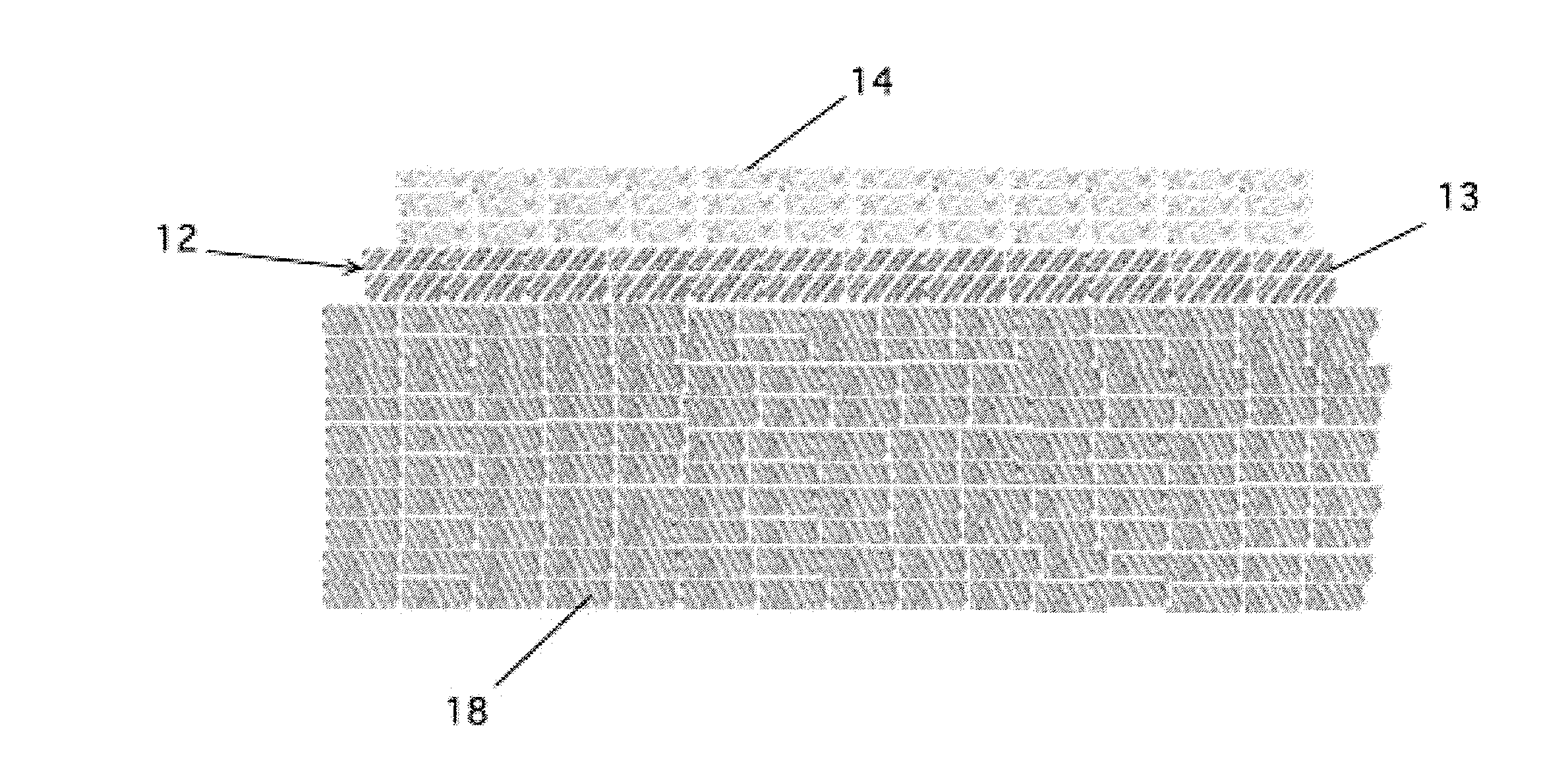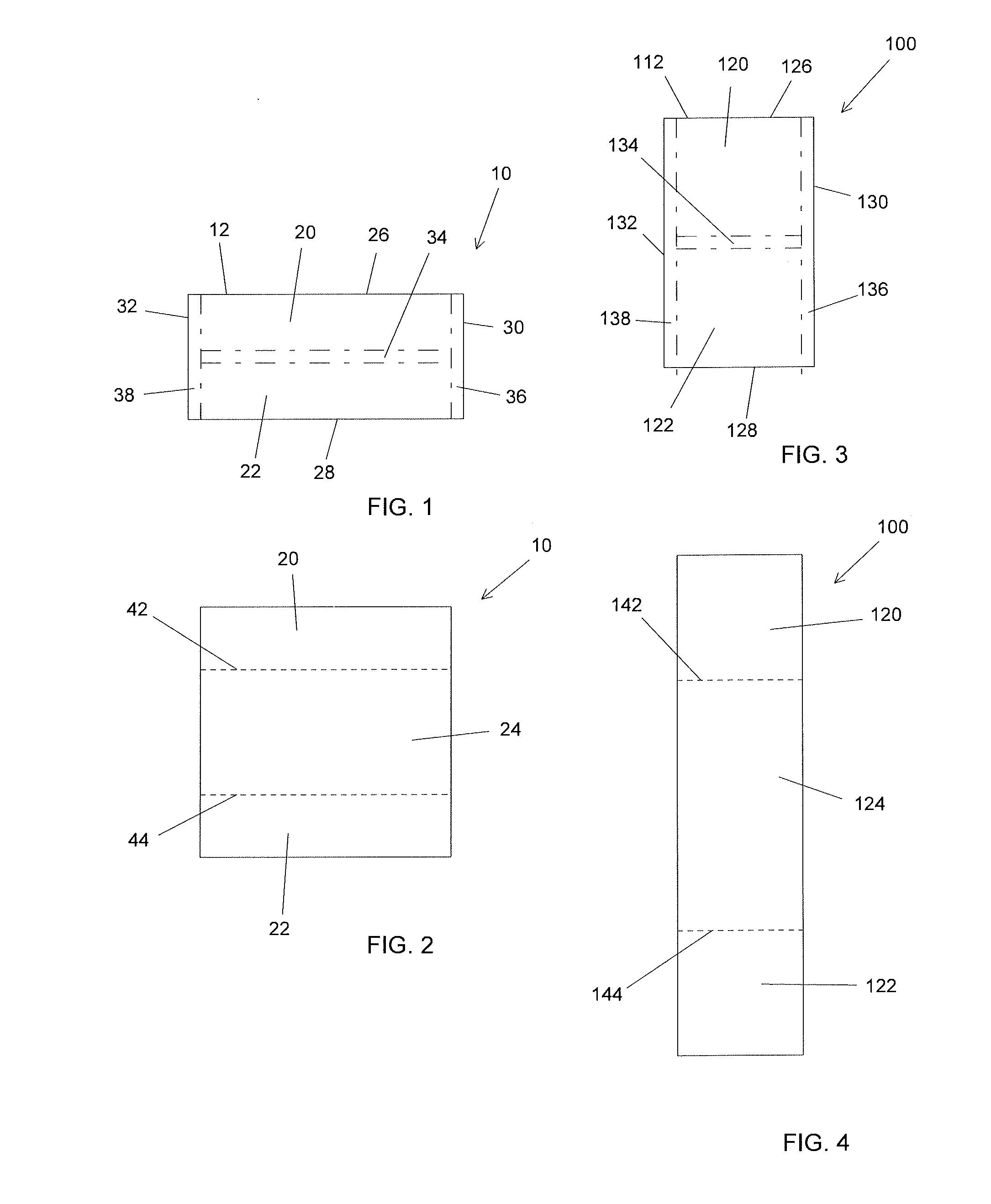Methods for Controlling Weeds and Water Using a Bag Filled with Landscaping Material
a technology for landscaping materials and bags, applied in the field of methods, can solve the problems of insect intrusion and water damage risk, potential erosion, etc., and achieve the effect of less water permeable, less water permeable, and less water permeabl
- Summary
- Abstract
- Description
- Claims
- Application Information
AI Technical Summary
Benefits of technology
Problems solved by technology
Method used
Image
Examples
first embodiment
[0038]Referring now to the drawings, a bag 10, constructed of weed suppression material 12 in accordance with the present invention, is illustrated FIGS. 1-2. FIG. 1 shows the bag 10 in its closed configuration. FIG. 2 shows the bag 10 in its open configuration. The bag 10 is formed of a weed suppression material 12. The weed suppression material 12 for the bag 10 may be a sheet of perforated plastic, biodegradable / compostable plastic film, paper, cardboard, or cloth fabric (woven or nonwoven). For most planting bed applications, the weed suppression material 12 may be a layer 13 (FIG. 11) of porous material in order to allow water and air to pass through the weed suppression material 12 to the underlying soil 18 (FIG. 11). In practice, the porous layer 13 may be implemented by three layers of wet strength Kraft paper. The number and thickness of individual layers comprising porous layer 13 may be adjusted to meet the strict requirements of shipping, handling and storage on one hand...
second embodiment
[0045]FIGS. 3 and 4 show a bag 100 of the present invention. The bag 100 comprises a first front panel 120, a second front panel 122, and a back panel 124. The first front panel 120, the second front panel 122, and the back panel 124 are all connected together at a first end edge 126, a second end edge 128, a first side edge 130, and a second side edge 132 to form the bag 100 for packaging the ground cover material during shipping, handling, and storage. The bag 100 further has a center tear strip 134, a first side tear strip 136, and a second side tear strip 138. The center tear strip 134 interconnects the first front panel 120 and the second front panel 122. The first side tear strip 136 connects the edges of the first front panel 120, the second front panel 122, and the back panel 124 along the first side edge 130. The second side tear strip 138 connects the edges of the first front panel 120, the second front panel 122, and the back panel 124 along the second side edge 132.
[0046...
third embodiment
[0047]FIGS. 5 and 6 show a bag 200 of the present invention. The bag 200 comprises a front panel 220 and a back panel 224. The front panel 120 and the back panel 224 are connected together at a first side edge 226, a second side edge 228, a first end edge 230, and a second end edge 232 to form the bag 200 for packaging the ground cover material during shipping, handling, and storage. The bag 200 further has a side tear strip 234, a first end tear strip 236, and a second end tear strip 238. The side tear strip 234 interconnects the front panel 220 and the back panel 224. The first end tear strip 236 interconnects the edges of the front panel 220 and the back panel 224 along the first end edge 230. The second end tear strip 238 interconnects the edges of the front panel 220 and the back panel 224 along the second end edge 232.
[0048]In order to use the bag 200 as a weed suppression material, the side tear strip 234, the first end tear strip 236, and the second end tear strip 238 are re...
PUM
 Login to View More
Login to View More Abstract
Description
Claims
Application Information
 Login to View More
Login to View More - R&D
- Intellectual Property
- Life Sciences
- Materials
- Tech Scout
- Unparalleled Data Quality
- Higher Quality Content
- 60% Fewer Hallucinations
Browse by: Latest US Patents, China's latest patents, Technical Efficacy Thesaurus, Application Domain, Technology Topic, Popular Technical Reports.
© 2025 PatSnap. All rights reserved.Legal|Privacy policy|Modern Slavery Act Transparency Statement|Sitemap|About US| Contact US: help@patsnap.com



